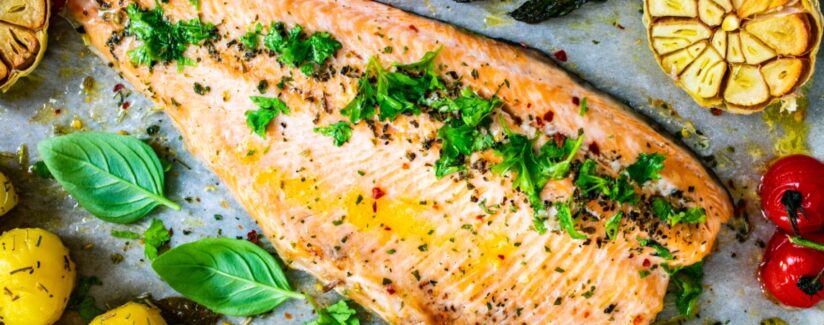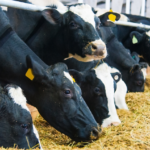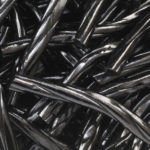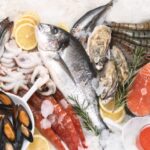
Are Farmed Fish as Nutritious as Wild-Caught Fish?
How can you know the fish and seafood you are choosing is safe and nutritious? At Best Food Facts, we have been diving into fish farming – also known as aquaculture. For our questions about nutrition, we reached out to two experts. Connie Diekman is a registered dietitian who serves as a food and nutrition consultant and is the former president of the Academy of Nutrition and Dietetics. Dr. Katheryn Parraga-Estrada is an Extension Specialist in Muscle Food Safety at Virginia Tech University.
What are the health benefits of eating fish and seafood?
Diekman: Fish and seafood offer good sources of protein and healthier fats, along with a variety of other micronutrients. Fish is low in total fat, and the type of fat found in most fish is the unsaturated type. Unsaturated fats are not associated with an increased risk of heart disease and may, in fact, help to prevent it. The unsaturated fats in fish include the healthier omega-3 fatty acids that have been associated with a reduced risk of heart disease. The American Heart Association recommends eating fish at least twice per week, and choosing these (omega-3) fattier fish more often.
Dr. Parraga-Estrada: Seafood is an important protein that provides several benefits to human health. The United States Department of Agriculture (USDA) – Dietary Guidelines for Americans, the Food and Drug Administration (FDA), and the Environmental Protection Agency (EPA) recommend serving portions for adults, children (differs by age ranges), and pregnant women. Generally, at least two servings a week is recommended for adults with a 2,000-calorie diet.
What nutrients do fish and seafood provide?
Diekman: Fatty fish, such as anchovies, salmon, tuna, sardines, albacore or white tuna, and mackerel are all good sources of omega-3. Leaner fish, such as cod, halibut, tilapia, and other flat white fish are not as high in omega-3 acids – but they do contain them – and are low in saturated fat (like all fish). Fish is a good source of protein, iron, phosphorus, niacin, iodine, choline, and vitamins B12 and D, making it a rich source of nutrients.
Dr. Parraga-Estrada: Seafood provides key nutrition for pregnant women while breastfeeding and during the child’s brain development. Seafood is a good source of omega-3 (DHA and EPA) and omega-6 fats. Also, it has some key minerals such as:
- Iron
- iodine (very important during pregnancy)
- choline (necessary for the baby’s spinal cord)
- zinc (helps children’s immune systems)
- selenium
- vitamins such as B12 and D
The FDA has a recommendation chart for low in mercury seafood.
Do farmed fish have the same nutrition benefits as wild-caught fish?
Diekman: The choice between farm-raised and wild-caught fish can often be confusing. For many people, knowing the difference between the two methods is not clear, and questions around nutrition and safety often top the list. Farm-raised fish receive a balanced diet to maximize their grow and quality. They might also receive supplements that can help boost omega-3 content. Wild-caught fish consume a diet that reflects what is normally found in oceans, rivers, lakes, or streams, so the nutrition can vary depending on time of year and where they feed. One question that exists is if there is any difference in the nutrition between the two modes of feeding. Wild-caught fish tend to be slightly lower in saturated fat content, but farm-raised fish is higher in omega-3’s. In most cases, the difference is too small to worry about.
Dr. Parraga-Estrada: Nutrition profiles for wild-caught and farm-raised fish are not 100% similar. Wild-caught fish feed on prey available in the water, and this can vary on the season. In contrast, farm-raised seafood will feed on specific diets, giving them a more consistent nutritional profile. The differences between farm-raised and wild-caught are minimal, and both are good sources of omega-3 and -6 fatty acids, vitamins, and minerals.
Fish feed consists of ingredients such as soybean meal, fish meal, fish oil, vitamins and nutrients and is formulated for each species of fish.
What should you look for when choosing fish?
Diekman: When choosing fish, look for fish that is fresh. Fish should never smell “fishy.” The flesh should be bright and shiny, and there should be no dry parts to the fish.
Read the other articles in our series about aquaculture:
Is Aquaculture a Sustainable Way to Produce Fish and Seafood?
How Does Aquaculture Affect Water Supplies?
Are Farm-Raised Fish and Seafood Safe to Eat?
This content is sponsored by BestFoodFacts.org and United Soybean Board.


























